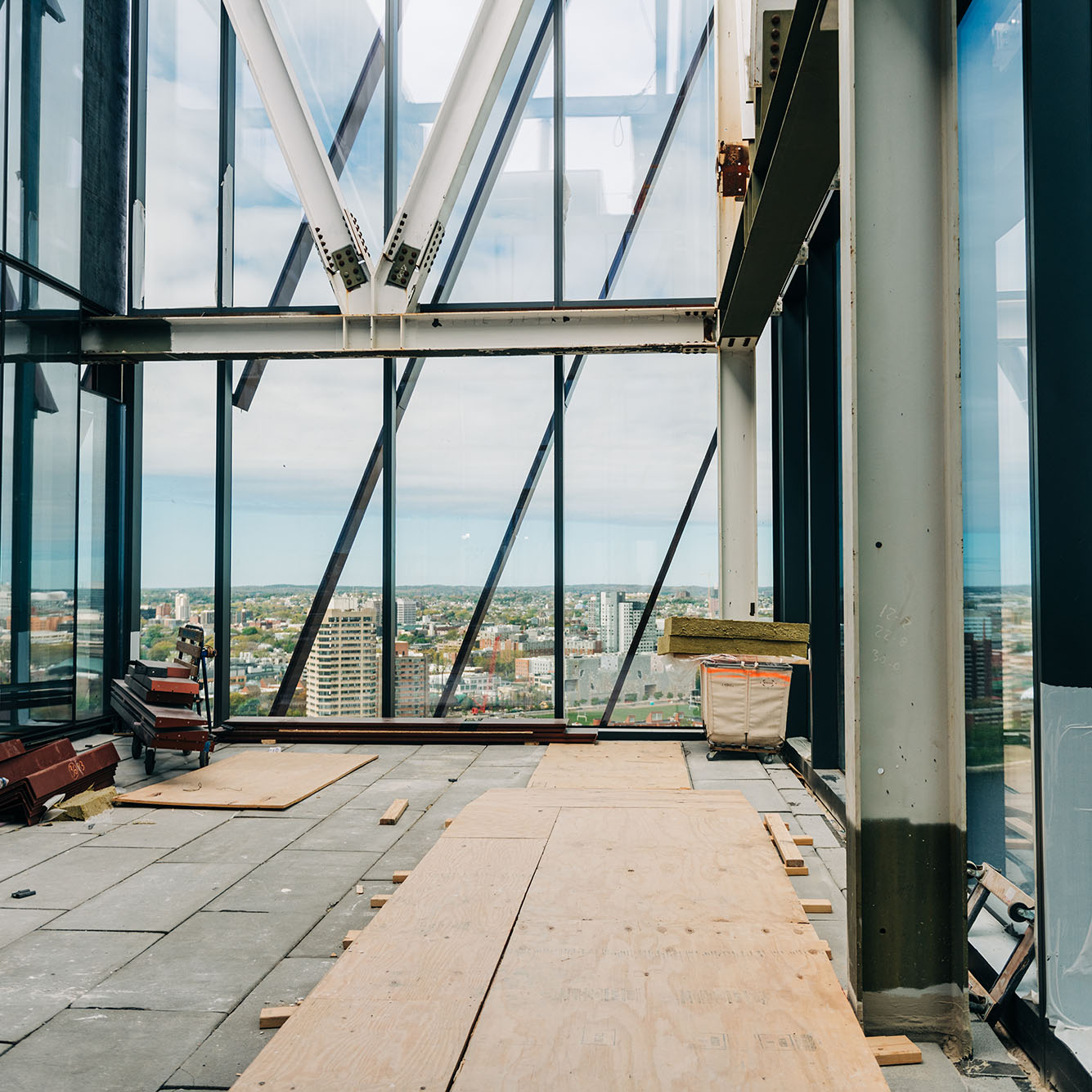No Gas. No Fuels. No Emissions. BU’s Greenest Building Ever
The six key features that make the Center for Computing and Data Science so environmentally unique

No Gas. No Fuels. No Emissions. BU’s Greenest Building Ever
The six key features that make the Center for Computing & Data Sciences so environmentally unique
Heated and cooled through underground geothermal wells, the Boston University Center for Computing & Data Sciences is designed to earn LEED Platinum certification.
It started with BU’s Climate Action Plan, which aims to reduce the University’s carbon emissions to net zero by 2040. Standing 19 stories tall and at nearly 350,000 square feet, the Center for Computing & Data Sciences is not only one of the biggest buildings in the University’s history—it is also 100 percent free of fossil fuels, the most environmentally sustainable, energy-efficient structure BU has ever built, and one of the “greenest” buildings in all of New England.
What makes it so environmentally sustainable? Let’s count the ways:
1. Wells

It all starts with an element of the building nobody will ever see: geothermal wells deep beneath the earth’s surface. The heating and cooling system will be powered through a closed-loop system of 31 holes bored 1,500 feet deep underground that avoids any contamination of groundwater. Heat pumps will use the temperature differential that the earth provides to draw heat from the ground in the winter, and then to push heat out in the summer. Incredibly, not a single gas line will be connected to the building, which means even the food preparation from BU Dining Services will be done without natural gas.
2. Shades

Just like at home, when you want sunlight and warmth, you raise your shades or you want it cooler, you lower the shades, the new building will rely on shades to control the temperature inside. Except this shade system is from another world. The shades don’t get pulled up or down, they are fixed and prevent direct sun from entering the building during much of the day, keeping the sun’s energy out when you need to cool the building.
3. Windows

You think your newly installed, energy-efficient windows at home are thick? Most major buildings today have double-glazed windows, with one pocket of air between them. These windows on the Center for Computing & Data Sciences will be triple-glazed, meaning the heat in the building will stay in the building better and the hot or cold air outside will have a harder time getting inside. The windows have three layers of glass, and two pockets of space filled with gas. That also means the window next to a person inside won’t be a cold piece of glass in the winter. Needless to say, there shouldn’t be any drafts inside.
4. No new-car smell

There is a reason new cars smell like new cars: chemicals. Sorry, but the Center for Computing & Data Sciences won’t smell like a new car, or a new building—intentionally. Instead of using chemicals and compounds inside, builders used sealants and finishes that are virtually odor-free, which improves the air quality in the building.
5. Steps count

Until you see the enormous “irresistible staircase” at the heart of the building’s design, it’s hard to explain it. It’s wide like a sidewalk. The steps barely feel like a step up; they feel more like walking a slight incline. And the staircase looks so inviting, you want to sit and relax on it, and enjoy the bright sunlight flowing onto it. Sure, you could take the elevator, but you will be drawn to this massive staircase, and it will not only promote physical activity, but also person-to-person interaction.
6. No floods allowed

Right behind the building is the Charles River. On the one hand, the proximity makes for spectacular views as you reach the higher floors and look out on Cambridge, or Fenway Park, or the water below. On the other hand, in the event of rising water or a storm surge, it could have put the building at risk of flooding. That’s why steps were taken to protect against that possibility. For starters, the building is set more than three feet above the top of the Charles River dam, out of harm’s way from rising seas and river flooding. If power did go out, the building’s generators will kick in to prevent any freezing in the building.
Comments & Discussion
Boston University moderates comments to facilitate an informed, substantive, civil conversation. Abusive, profane, self-promotional, misleading, incoherent or off-topic comments will be rejected. Moderators are staffed during regular business hours (EST) and can only accept comments written in English. Statistics or facts must include a citation or a link to the citation.